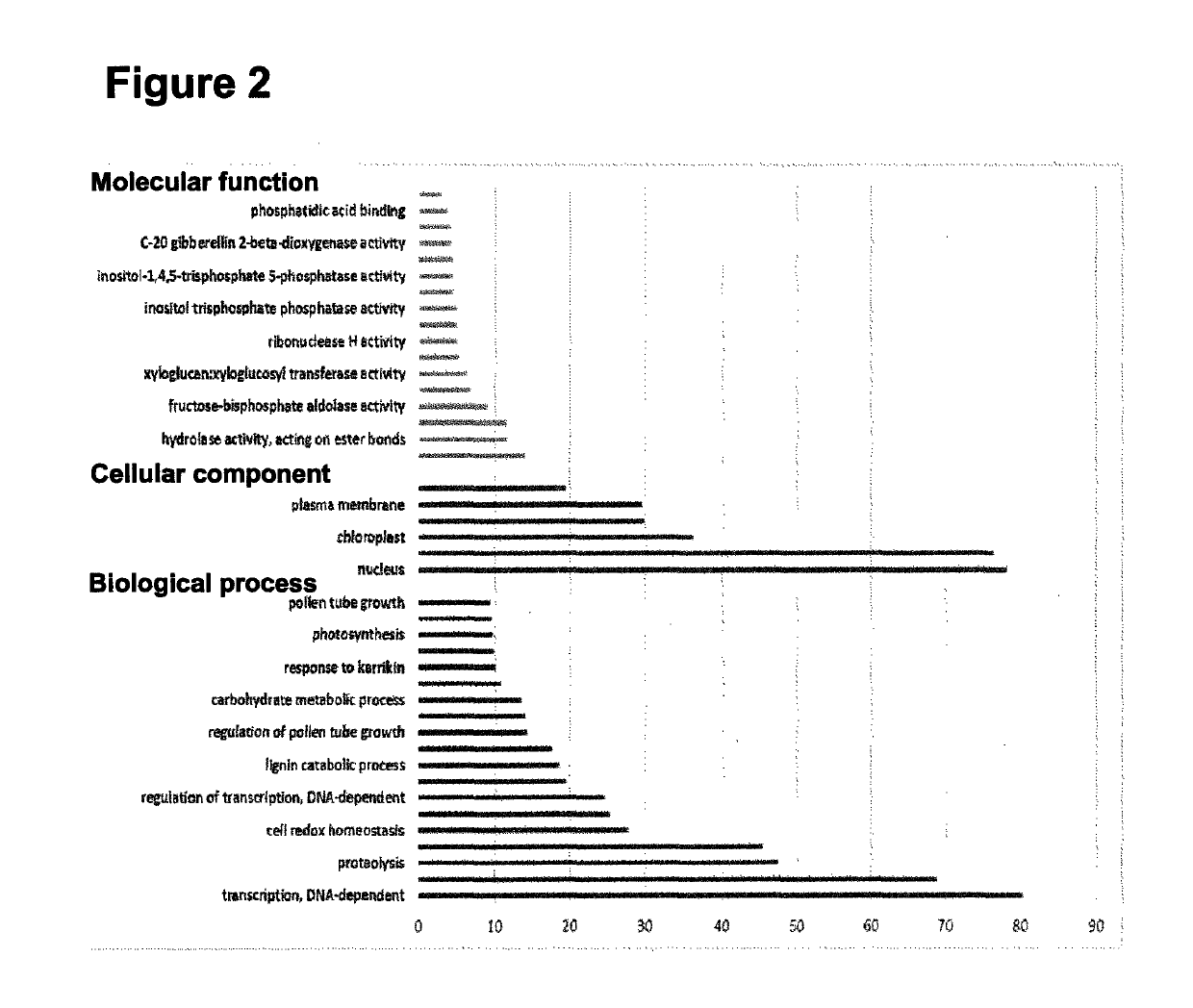Terpene synthases from ylang ylang (Cananga odorata var. fruticosa)
a terpene synthase and ylang ylang technology, applied in the field of plant molecular biology, can solve the problems that the biosynthetic pathway leading to the production of the floral scent of ylang ylang has not been fully understood
- Summary
- Abstract
- Description
- Claims
- Application Information
AI Technical Summary
Benefits of technology
Problems solved by technology
Method used
Image
Examples
example 1
Materials and Methods
[0089]Plant Materials:
[0090]Cananga odorata var. fruticosa (known as dwarf ylang ylang) was grown in Singapore were collected in November for RNA-seq. Four different stages of flowers and leaves of of dwarf ylang ylang were obtained in April for further experiments. The four different stages of flowers are as follows: (B) bud stage; completely closed petal, green; (I) initial-flowering stage: semi-open small and short petals, green, 9 days after bud stage; (II) full-flowering stage: completely open large and long petals, yellowish green, 20 days after bud stage; (III) end-flowering stage: fully matured petals, yellow, 30 days after bud stage.
Four-week old Nicotiana benthamiana plants grown in a greenhouse were used for in vivo characterization and subcellular localization of CoTPSs.
[0091]Essential Oils Extraction from Ylang Ylang Flowers:
[0092]Flowers and leaves from ylang ylang were frozen in liquid nitrogen and ground to a powder by pre-chilled mortar and pest...
example 2
Stage Specific Variations of Volatile Organic Compounds in Dwarf Ylang Ylang Flowers
[0112]Flowers can emit different volatile compounds at different stages of development (Dudareva et al., 2000). The dwarf ylang ylang flowers have little floral scent when the petals are green but their scent gradually becomes stronger as the flower matures. To examine the overall intensity and the diversity of the floral scent during flower development, total essential oils from flowers at four different stages of development were analysed by gas chromatography-mass spectrometry (GC-MS) (FIGS. 1A and 1B). FIG. 1B and FIG. 9 show that the chemical composition of the essential oils from the floral bud stage to the 3 different stages of open flower development was very diverse both quantitatively and qualitatively. Only 15 compounds that have meaningful levels>0.1% of total volatile compounds were detected from floral buds (FIG. 1B and Table 2). The number of peaks increased progressively during matura...
example 3
RNA Sequencing, De Novo Assembly and Annotation of Transcriptome
[0115]To profile ylang ylang floral transcriptome, RNA-seq libraries that were synthesized from the ylang ylang mature yellow flowers were sequenced. Illumina sequencing runs generated more than 110 million reads of 101 base pairs (bp) and the quality of reads were evaluated by FastQC (FIG. 13). Due to the absence of reference genomic sequences of ylang ylang, the Trinity method was used for de novo assembly of short sequence reads (Grabherr et al., 2011). These assemblies generated a total of 45,379 non-redundant (nr) unigenes with a N50 value of 2,016 bp (Table 3). The assembled unigenes were blasted against the National Centre for Biotechnology Information (NCBI) nr protein database and protein databases from Arabidopsis thaliana, Vitis vinifera, and Oryza sativa. Among 45,379 non-redundant unigenes, 30,539 (67.3%) unigenes were annotated through BLASTX search with E-value<=le-3 (Table 3). Functional classifications ...
PUM
| Property | Measurement | Unit |
|---|---|---|
| temperature | aaaaa | aaaaa |
| ionic strength | aaaaa | aaaaa |
| pH | aaaaa | aaaaa |
Abstract
Description
Claims
Application Information
 Login to View More
Login to View More - R&D
- Intellectual Property
- Life Sciences
- Materials
- Tech Scout
- Unparalleled Data Quality
- Higher Quality Content
- 60% Fewer Hallucinations
Browse by: Latest US Patents, China's latest patents, Technical Efficacy Thesaurus, Application Domain, Technology Topic, Popular Technical Reports.
© 2025 PatSnap. All rights reserved.Legal|Privacy policy|Modern Slavery Act Transparency Statement|Sitemap|About US| Contact US: help@patsnap.com



